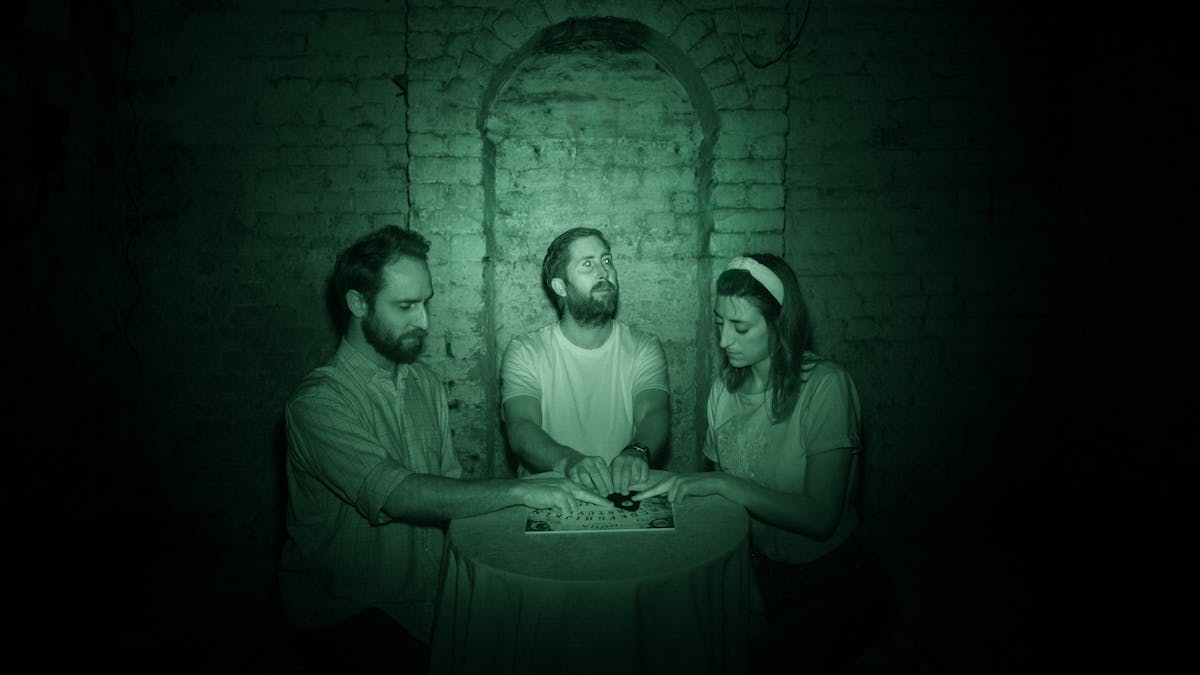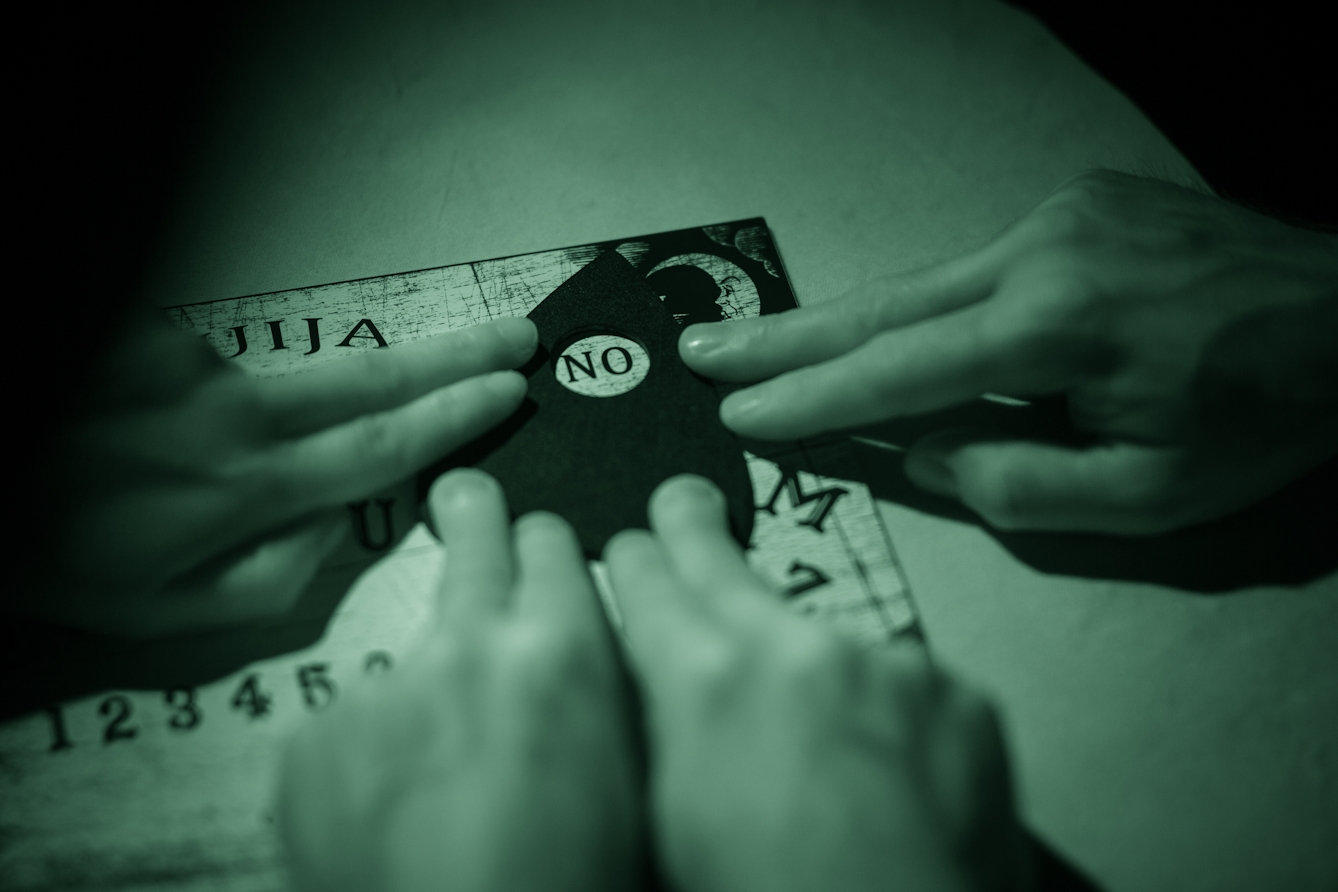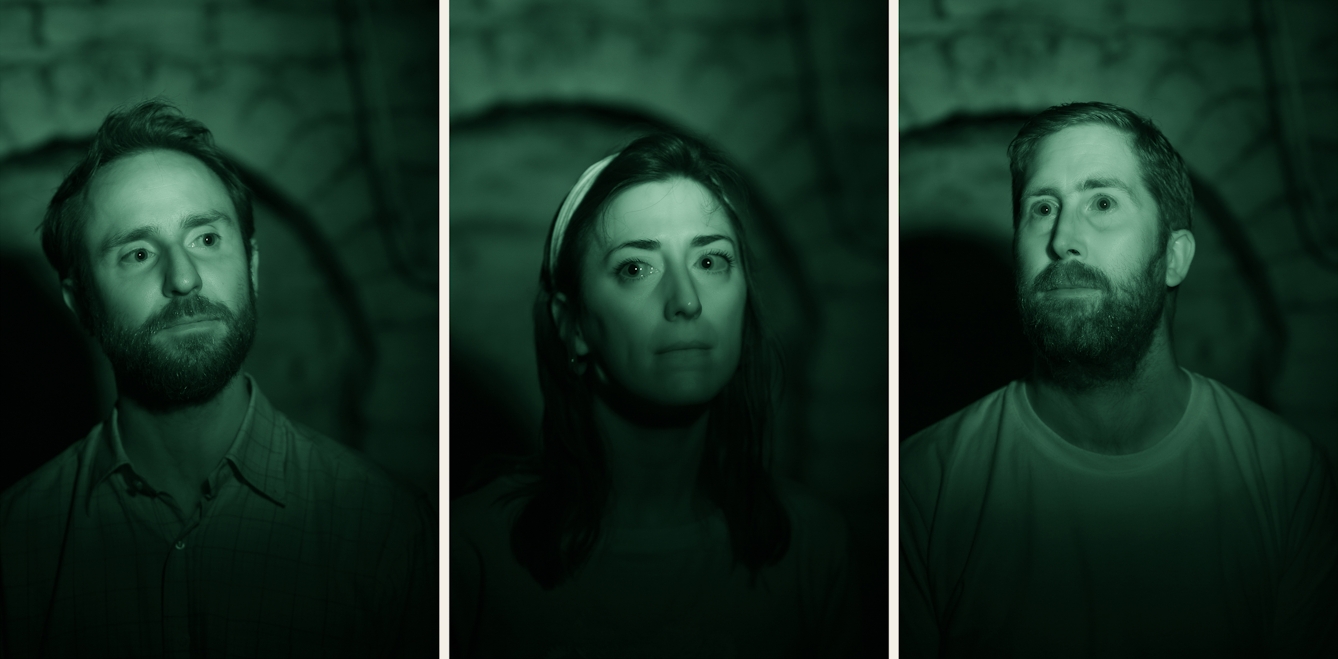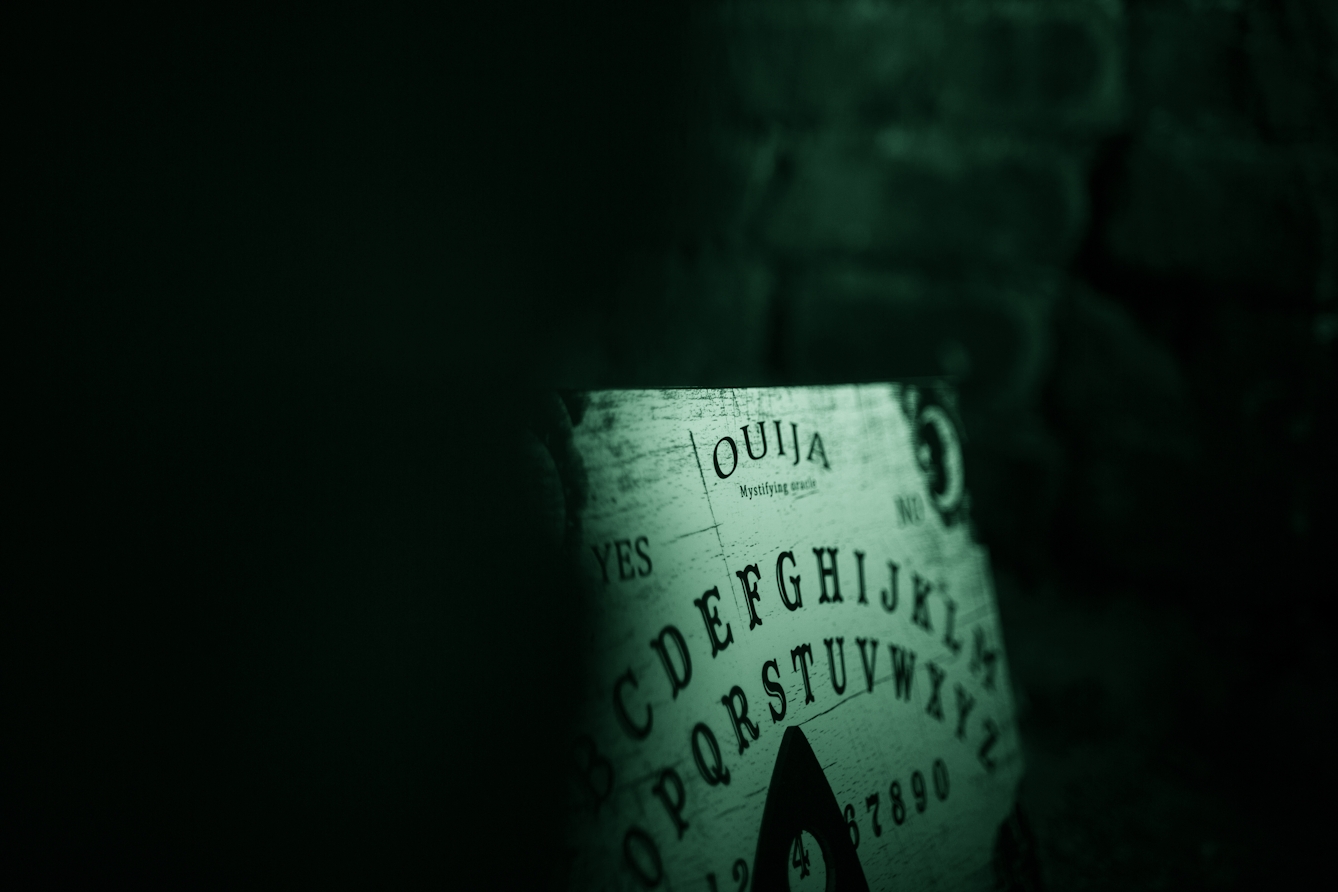Well over 100 years ago scientists uncovered the forces at work during séances and Ouija board sessions. But, as this extract from Matthew Tompkins’ book ‘The Spectacle of Illusion’ shows, similar phenomena can still be used to extract money from the credulous.
The psychology of Ouija
Words by Matthew L Tompkinsphotography by Benjamin Gilbertaverage reading time 5 minutes
- Book extract

One line of psychological research that can be traced back to early investigations of spiritualist phenomena concerns the concept of the ‘ideomotor’ effect. Table tilting was one of the original spiritualist proofs of direct spiritual intervention in the physical world. In its most basic form, a table-tilting test could simply involve a group of participants sitting around a table. Each would place their fingertips on the table, and apparently without any effort on the part of the sitters the table would mysteriously begin to sway, sometimes even float into the air. For believers, table-tilting effects served to reinforce their belief that external invisible forces could indeed act on the physical world.
While anyone who had felt or seen the table tilt could agree that a force was at work, the precise nature of that force has been the subject of intense and distinctly odd debates. Some observers feared that the movement of the table resulted from the actions of demonic forces drawn by the unholy urges of the deviant spiritualists.
Mesmerists, such as the self-proclaimed ‘Electrical Psychologist’ John Bovee Dodds (1795–1872), speculated that such movements might result from “electro-magnetically charging the table from a living battery of many human hands”, that “the million pores in the table are filled with the electro-magnetism from human brains” and that the electromagnetism was “lighter than gas”, causing the table to rise, like a balloon.
Most spiritualists were of the opinion that the forces were actually physical manifestations of the souls of the dead. In 1916, Oliver Lodge wrote that his spiritualist convictions were reinforced when a medium spelled out the name of his late son, Raymond, by counting the movements of a table and assigning them letters.
More: What I learnt about stagecraft as a magician's assistant.

Scrutinised by science
But one of the most appealing aspects of table tilting was the fact that it could be practised at home, without the need for a medium or any special equipment, and countless amateur investigators could experience the mysterious powers for themselves. A less ghostly explanation for the forces was reported in 1851 by the physicist Michael Faraday (1791–1867), who developed a simple apparatus that surreptitiously recorded the muscle movements of sitters.
Faraday concluded that the movements of the table could be attributed to non-conscious muscle movements by the sitters themselves. In other words, the tilts were not necessarily even intended to be deceptive. Believers were actually moving their own bodies while being unaware of their motions, and because they were unaware of their actions, they attributed them to external forces.
The Ouija boards never provided answers that sitters themselves did not know.
In 1888, physiologist William Carpenter (1813– 85) coined the term ‘ideomotor effect’ to describe these unconscious muscular actions. Carpenter extended Faraday’s findings to other ostensibly occult instruments. He argued that ideomotor phenomena could explain the mystery underpinning a variety of uncanny objects including dowsing rods, pendulums and the planchettes of Ouija boards – in each case, the ostensibly external forces that operators reported experiencing may have actually been misidentified internal forces.
Carpenter’s experiments showed that these instruments could only provide accurate results if the operators themselves already knew the correct responses. In other words, the Ouija boards never provided answers that sitters themselves did not know, further reinforcing the idea that the energies driving the planchette were internally sourced, rather than externally generated.

Corruption and quiz questions
Misunderstandings about the ideomotor effect have continued well into the present day. For example, in 2014, James McCormick, a British businessman, was convicted of selling fake bomb detectors to various international police forces. McCormick’s devices were marketed as using principles similar to dowsing, with extreme life-or-death stakes. The operator was supposed hold the device, called the ‘ADE 651’, like a wand, and allow its subtle movements to direct them towards dangerous substances.
The devices themselves have been determined to be entirely non-functional. But thanks in part to the ideomotor effect, they could easily feel functional, especially if the operator were confident in their legitimacy.
Since the late 1990s, non-functional detection devices with names such as ‘Sniffex’, ‘GT 200’ and ‘Alpha 6’ were sold by various scammers to governments throughout the world, including those of Iraq, Egypt, Syria, India, Thailand and Mexico. The World Peace Foundation of Tufts University, which tracks corruption related to international arms trading, estimates that fake bomb detectors generated more than $100 million in profit between 1999 and 2010.
The concept of ideomotor action has also been the driving force for some contemporary psychological research. In 2015, a team of researchers at the University of British Columbia led by Hélène L. Gauchou demonstrated that Ouija boards could actually be used as a tool to tap into participants’ own unconscious knowledge.

In these experiments, volunteers were provided with a series of general knowledge questions that required yes/no answers (e.g. “Is Buenos Aires the capital of Brazil?”). The researchers revealed that when people were instructed to ‘ask’ a Ouija board for an answer they did not consciously remember, they were significantly more accurate than when they simply attempted to guess without the board.
Another recent study, published in 2018, arguably represents a contemporary update of Faraday’s procedure. Marc Andersen and his colleagues at Aarhus University set up eye-tracking cameras to study attendees at a Ouija board conference. Their results demonstrated that the spooky movements reported by participants may be attributable not simply to their own unconscious muscular actions.
The interactive movements of multiple individuals, each of whom has their hands on the planchette, may equally be responsible. “Our study solves the apparent paradox that participants on the one hand are producing the Ouija responses themselves, while they on the other hand are unable to predict those very same responses at an individual level,” Andersen explains. “In that sense, you could say that the ‘spirit’ is actually a representation of the collective ‘we’.”
‘The Spectacle of Illusion’ is out now.
About the contributors
Matthew L Tompkins
Dr Matthew L Tompkins is an American magician-turned-psychologist. His research, which has been featured across various international media outlets, including the Washington Post and BBC Future, focuses on the cognitive psychology of illusions. Matt was working as professional magician before he began his academic career, and his experiences performing continue to influence his work. He recently became the first member of the Magic Circle to be admitted on the basis of a peer-reviewed scientific publication.
Benjamin Gilbert
Ben is a senior photographer for Wellcome. He is happiest when telling stories with his photographs, whether that be the health implications of rural-to-urban migration in India, or the dedication of the workers who power the NHS.

